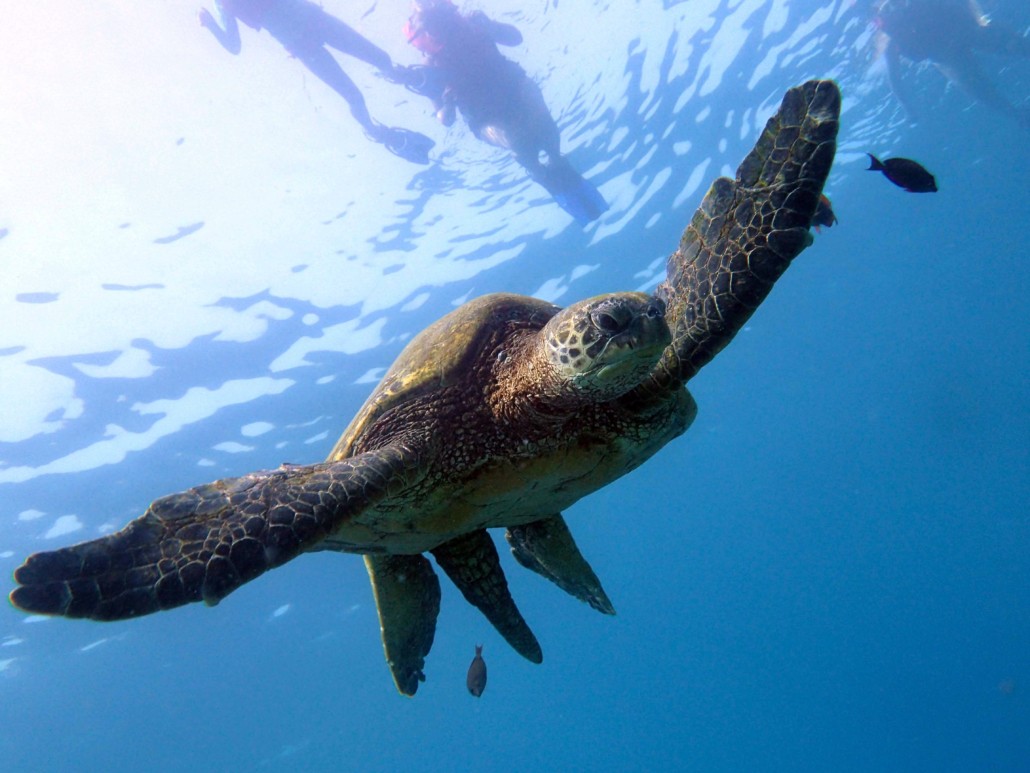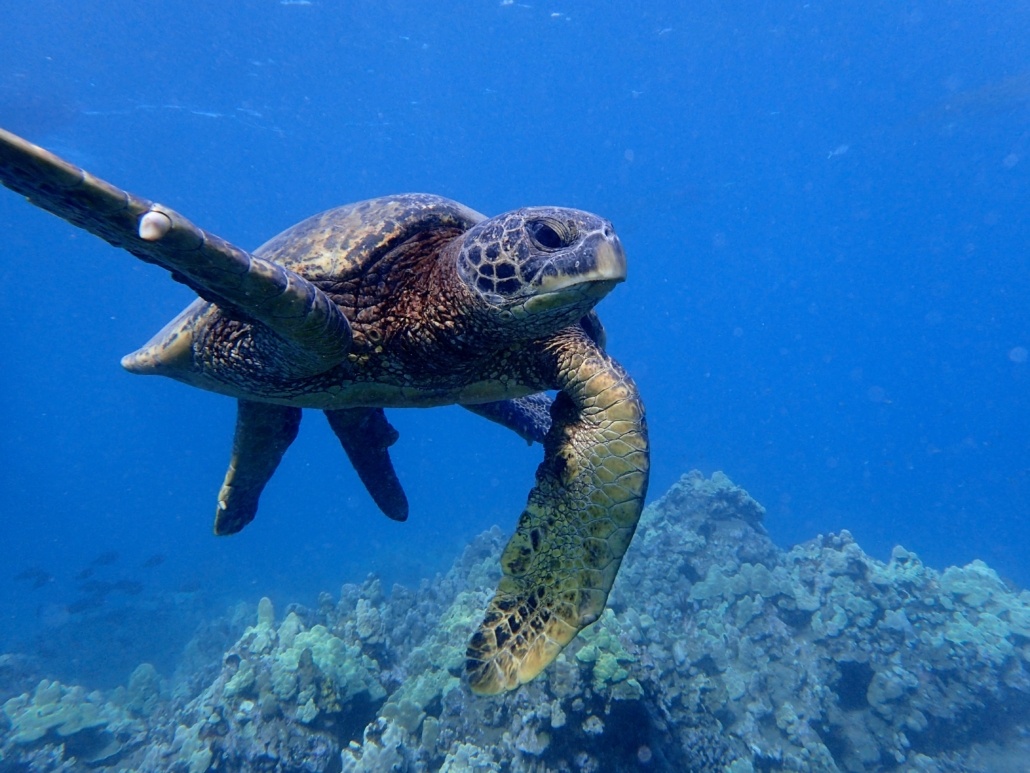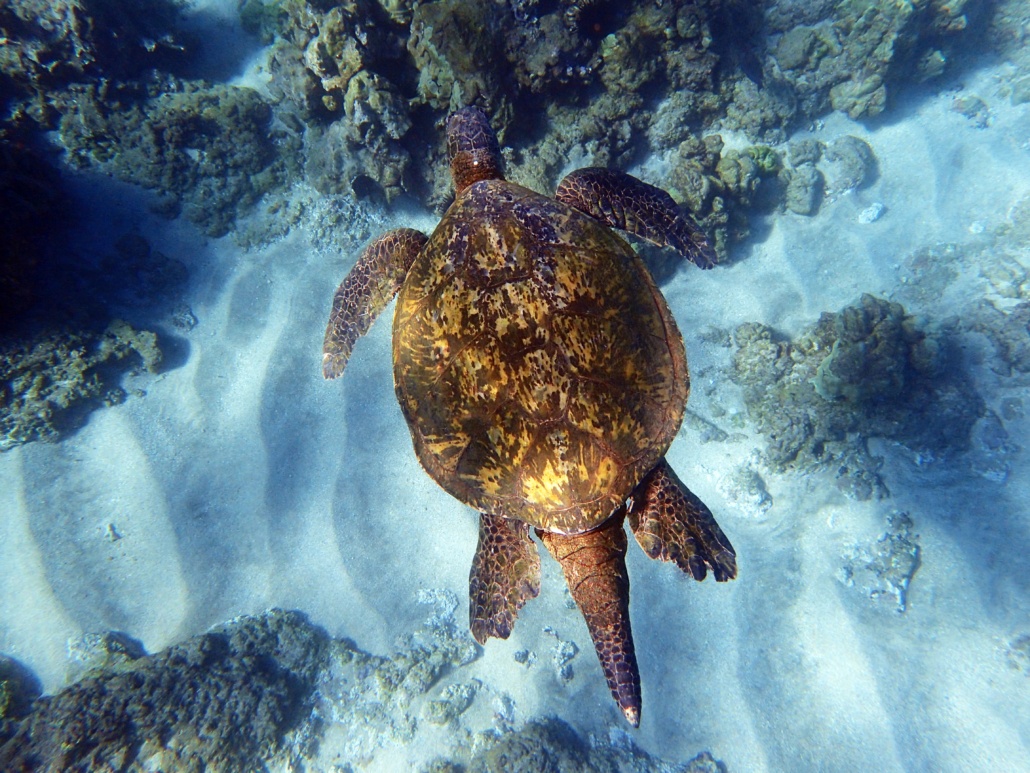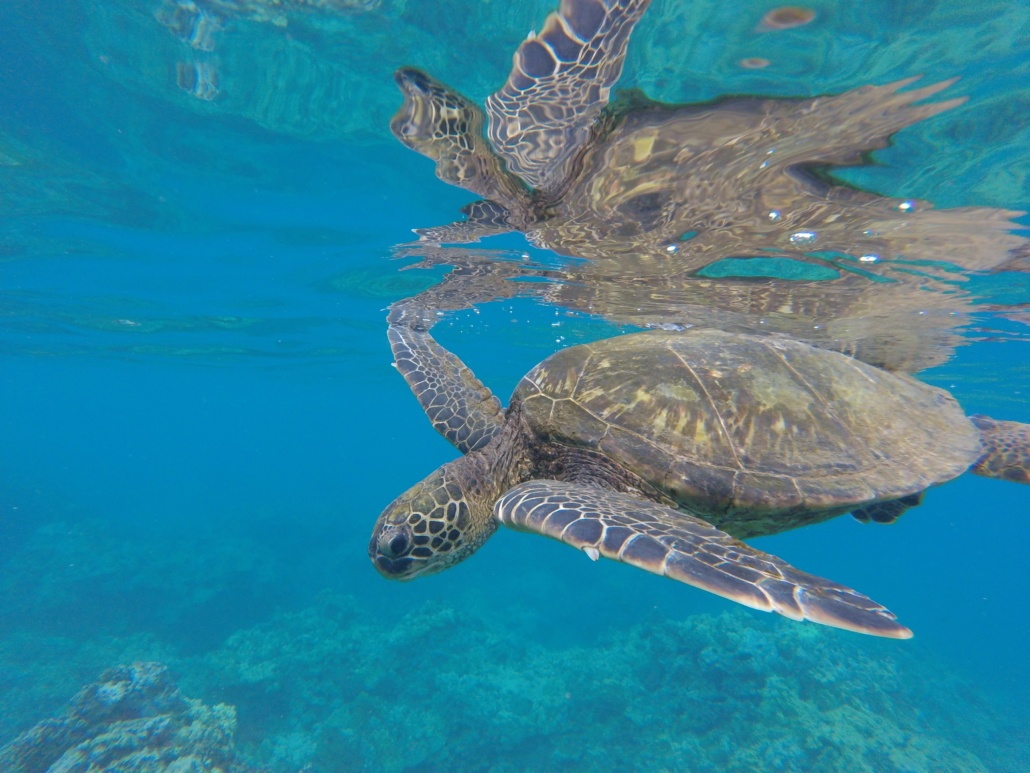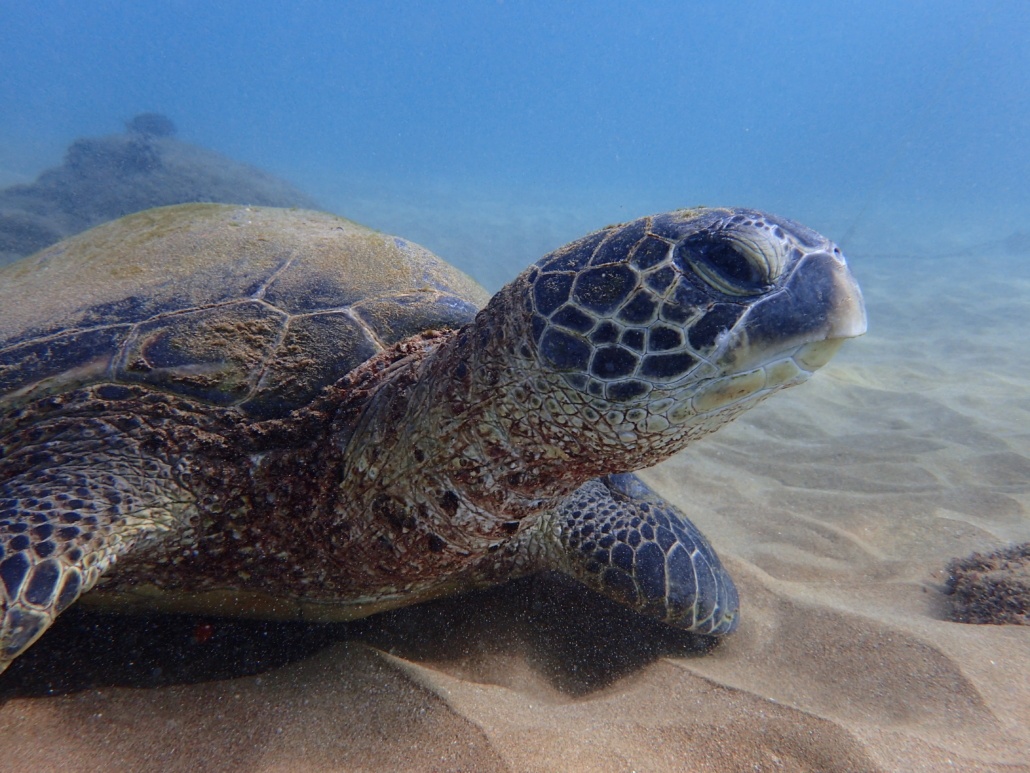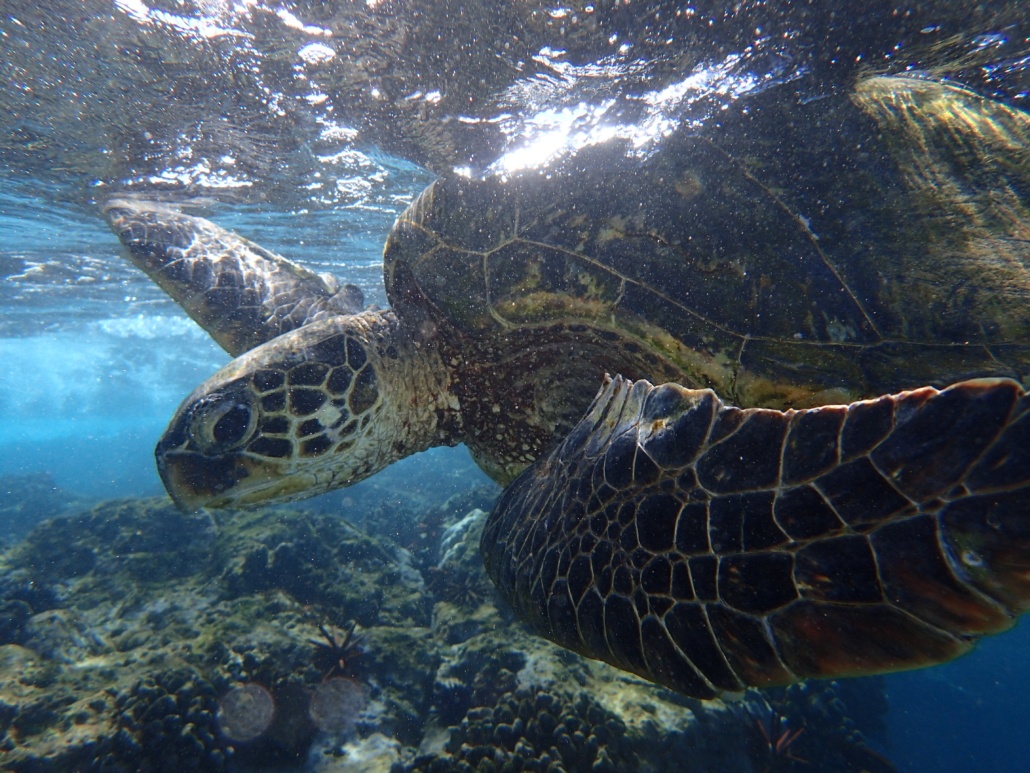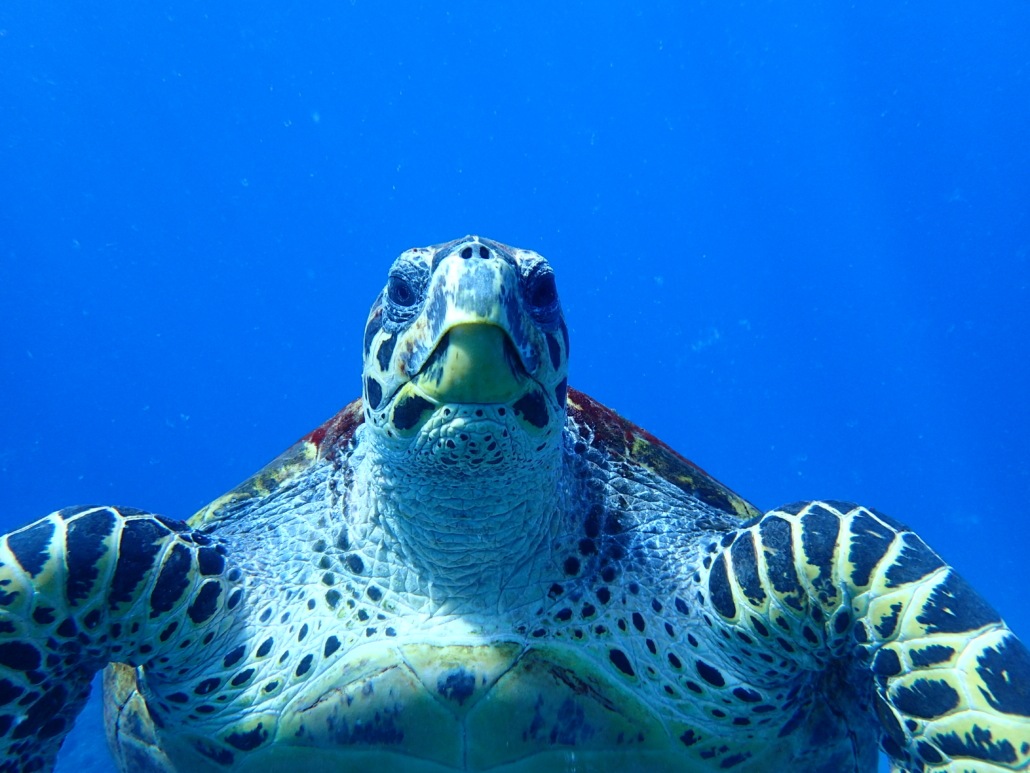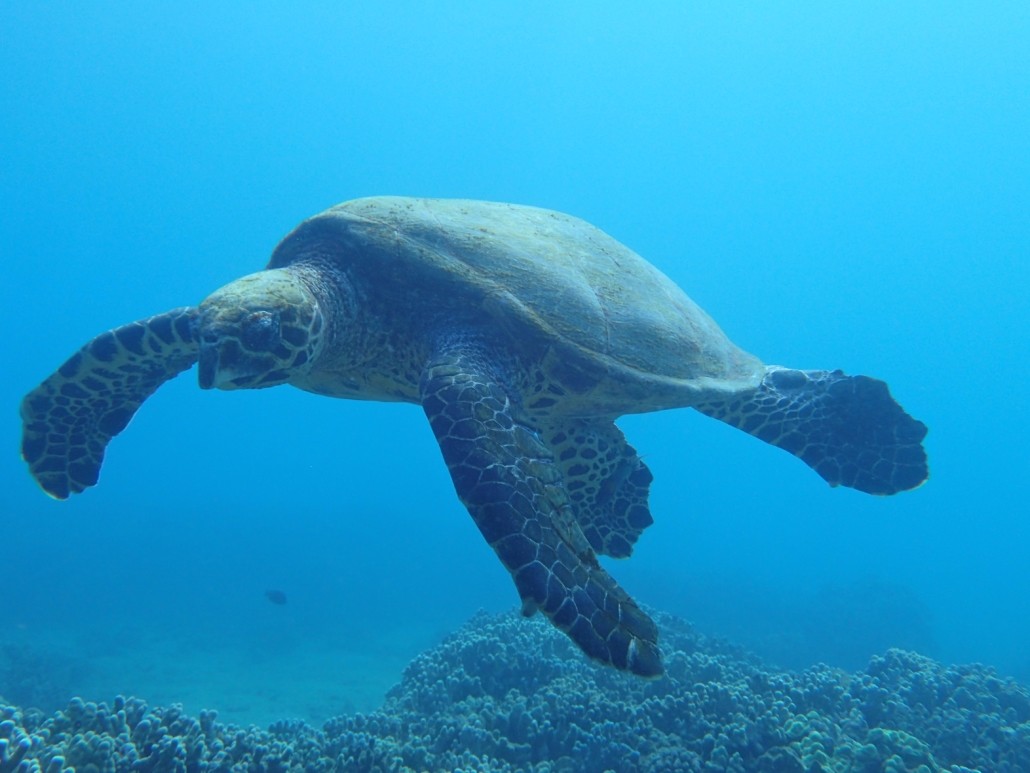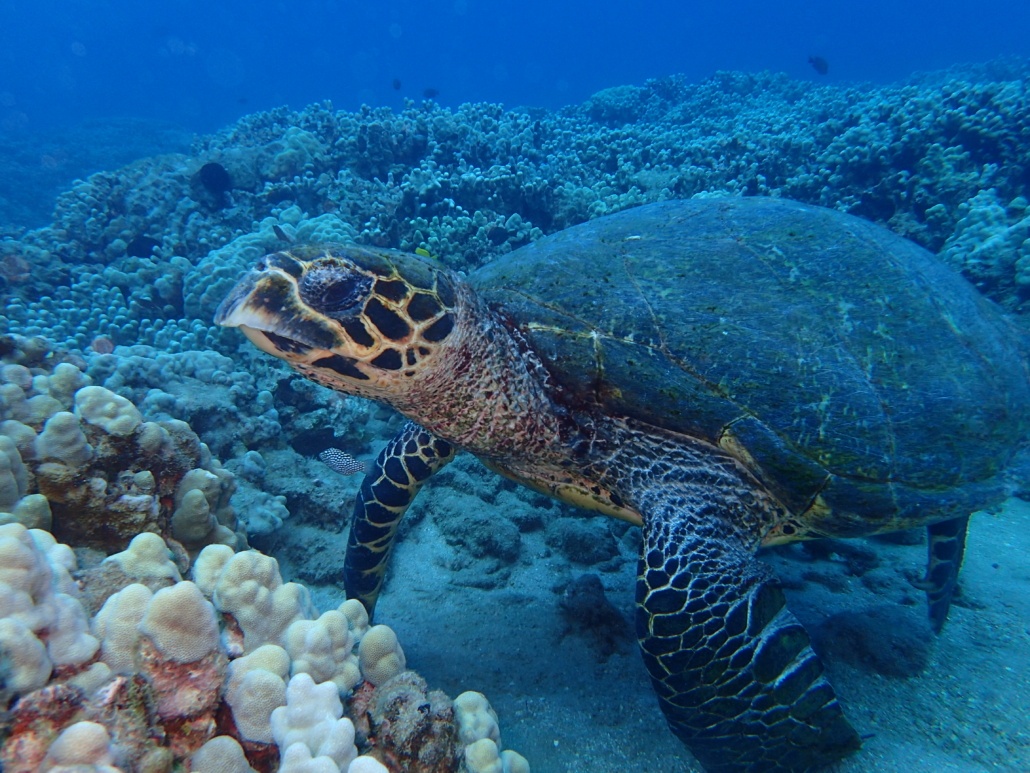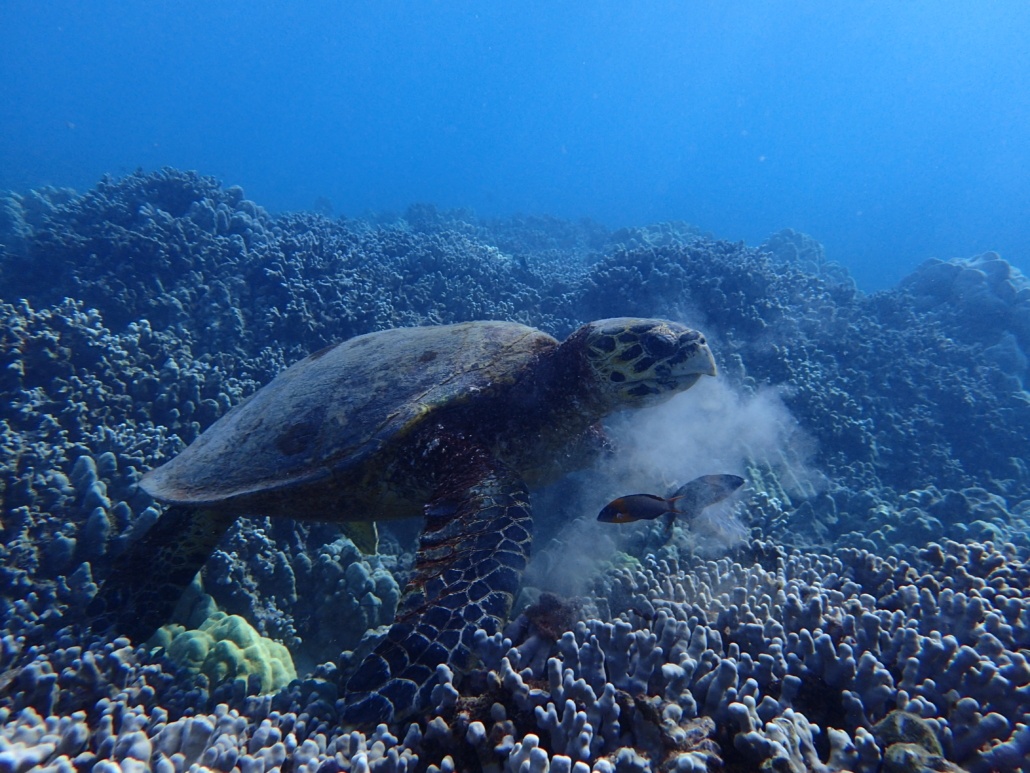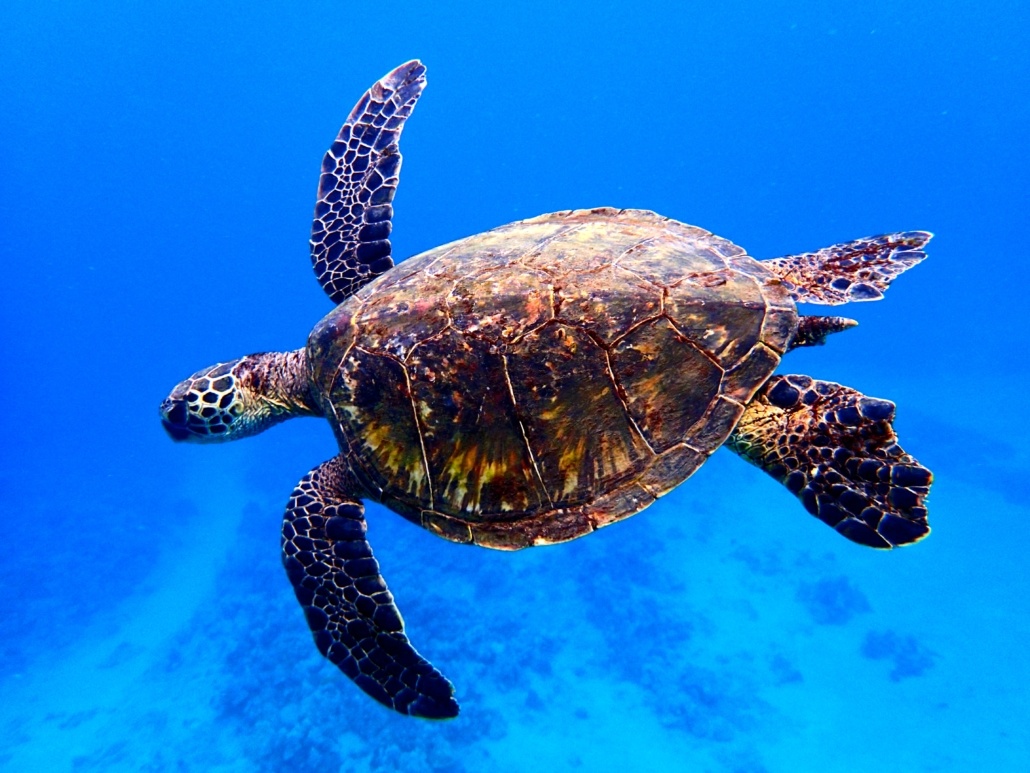Sea Turtle Facts
Sea turtles are by far one of our favorite marine animals to watch in Maui waters, and it never gets old. We hope you enjoy some interesting facts about sea turtles on Maui before your next visit!
Interesting facts about sea turtles:
Did you know?
-
They do not retract into their shell
-
Green sea turtles are named for the color of their fat layer
-
Female sea turtles return to the same beach to lay eggs using magnetic “clues”
-
Baby green sea turtles are carnivores and transition to eating seaweed as they grow older
-
The actual lifespan of green sea turtles is unknown
-
The sex of turtles is determined by the temperature of sand, cooler the sand the more males
Sea Turtle Habitat
Sea turtles live in tropical waters. Unlike other turtles who make international voyages, Hawaiian sea turtles tend to stick around the Hawaiian islands. They can be found near coral reefs, basking in the sun on Hawaii beaches or resting under ledges on the ocean floor. Sounds terrible right?
Sea Turtle Diet
So what do they eat? Young turtles typically hang out in deeper water and eat jellyfish and living organisms. As they grow older, and their size outweighs the threat of predators such as crabs, they start to visit the more shallow areas and feed on algae and seagrass. Rather than teeth, turtles use their beak to at. Have you ever seen a turtle that looks like it has a tear near its eye? Well, It’s not crying. It’s actually a clump of salt that is secreted by glands in their eyes. Sea turtles are able to drink sea water and rely on this gland to remove excess salt. Perfect!
Sea Turtle Behavior
Types of Sea Turtles on Maui
- Hawaiian Green
- hawksbill
- leatherback
- loggerhead
- olive ridley
Only two are likely to be observed: Green and hawksbill. The others three in deep ocean waters and are far less likely to be spotted.
Hawaiian green sea turtles
Hawksbill sea turtles
Hawksbill sea turtles Can grow up to 45 inches long and weigh up to 150 lbs. Their name is derived from their bird-like beak. Unlike the Hawaiian green sea turtles, hawksbill sea turtles remain omnivorous throughout their lifetime. Also a departure from their green friends, hawksbills do not regularly come onto the beach. They only make a and appearance when laying eggs. Though most of the nesting takes place on the big island of Hawaii, there are some who nest right here on Maui beaches. At this time, the hawksbill sea turtle is critically endangered and only one in 1000 hatchlings actually make it to sexual maturity. Organizations like the Hawaii Wildlife Fund conduct regular nesting watches for hawksbills during the season. Once a turtle has nested, the area is blocked off and monitored until the hatchlings emerge. For more information on the project, visit their website.
Best time of day to see turtles
Sea Turtle Viewing Guidelines
Where to See Sea Turtles
Top sea turtle beaches in Maui
Top sea turtle snorkel spots in Maui
Turtle Town in Makena is just like it sounds, a place to see a lot of sea turtles and it is located just off Makena Landing Beach Park. Other names for this spot are 5 Caves 5 Graves or the Hawaiian name of Nahuna. The lava tube formations on the ocean floor at Nahuna gave rise to unique coral reef structures and arches.
Turtle Gardens in Olowalu is another fantastic spot to see sea turtles. Also known as Coral Gardens, sea turtles graze along the “mother reef” that was recently named a Hope Spot. Recognizing that Olowalu hosts the largest manta ray population in the United States, spawns coral as far as Lanai and Molokai and features some of the oldest coral in the main Hawaiian Islands, Mission blue hopes to draw attention to the decline in coral health.
Why Are Sea Turtles Endangered?
-
Development: The habitat of sea turtles has been compromised and/or lost to building on our shorelines.
-
Coral reef loss: turtles rely on coral reefs for food. Hawaii recently experienced a devastating coral bleaching event leaving large areas of the coral dead. Though the reef has been slowly recovering, another bleaching event may not be too far into the future.
-
Egg harvesting: Many countries still harvest sea turtle eggs. In the United States, this is illegal.
-
Fishing industry: Turtles are often bycatch that get unintentionally caught in fishing nets by commercial fishing. There are now laws and protections in place to ensure turtles have a way to escape these nets, but their population was severely affected prior to the protections.
-
Light: City lights cause turtles to migrate toward beyond our beaches and onto roads with life-ending vehicles. Many areas restrict beach lighting during nesting and hatching season as well as set up barriers that prevent the turtles from leaving the beach.
-
Rising temperatures: As we mentioned earlier, the sex of sea turtles is determined by the temperature of the sand. With rising temperatures, we may see a decline in the male population which would limit reproduction.
-
Disease: Fibropapillomatosis is a disease that causes the growth of tumors on the turtle’s soft tissue. Though the tumors do not appear to be painful, they can grow large enough to obstruct a turtle’s daily habits such as eating.
-
Marine debris: Sadly our oceans are filling up with plastic waste that can take 200 years to break down. As it does this, it splits into smaller and smaller pieces. Turtles many times cannot distinguish this and other debris like fishing line from their natural food source. Their stomachs fill up with plastic. Turtles also run the risk of getting entangled in fishing nets that can restrict their ability to swim, grow, and eat.
Sea turtle tours
References:
- “Green Sea Turtle.” Giant Clam, Coral Reefs, Invertebrates, Tridacna Sp at the Monterey Bay Aquarium, www.montereybayaquarium.org/animal-guide/reptiles/green-sea-turtle.
- “Green Sea Turtle.” Giant Clam, Coral Reefs, Invertebrates, Tridacna Sp at the Monterey Bay Aquarium, www.montereybayaquarium.org/animal-guide/reptiles/green-sea-turtle.
- “Hawaii Marine Life – Maui Ocean Center.” Maui Ocean Center, mauioceancenter.com/educate/hawaiis-marine-life/.
- “Hawaiian Sea Turtles.” Hawaii Wildlife Fund – Hawaiian Sea Turtles, www.wildhawaii.org/marinelife/turtles.html.
- “Sea Turtles.” Hawaii Invasive Species Council, 21 Sept. 2017, dlnr.hawaii.gov/dar/species/sea-turtles/.
- US Department of Commerce, and NOAA. “Home Page of NOAA Fisheries Service – Pacific Islands Regional Office.” Monk Seal Population Size and Threats :: NOAA Fisheries Pacific Islands Regional Office, 21 June 2006, www.fpir.noaa.gov/PRD/prd_green_sea_turtle.html.
- “Olowalu Reef Is Announced as the First Hawaiian Hope Spot!” Mission Blue, 18 Aug. 2017, mission-blue.org/2017/08/olowalu-reef-is-announced-as-the-first-hawaiian-hope-spot/.
- “Hawai’i Marine Life Conservation Districts.” Hawaii Invasive Species Council, 1 Apr. 2015, dlnr.hawaii.gov/dar/marine-managed-areas/hawaii-marine-life-conservation-districts/.
- “Hawksbill Sea Turtle.” National Geographic, 11 Apr. 2010, www.nationalgeographic.com/animals/reptiles/h/hawksbill-sea-turtle/.
